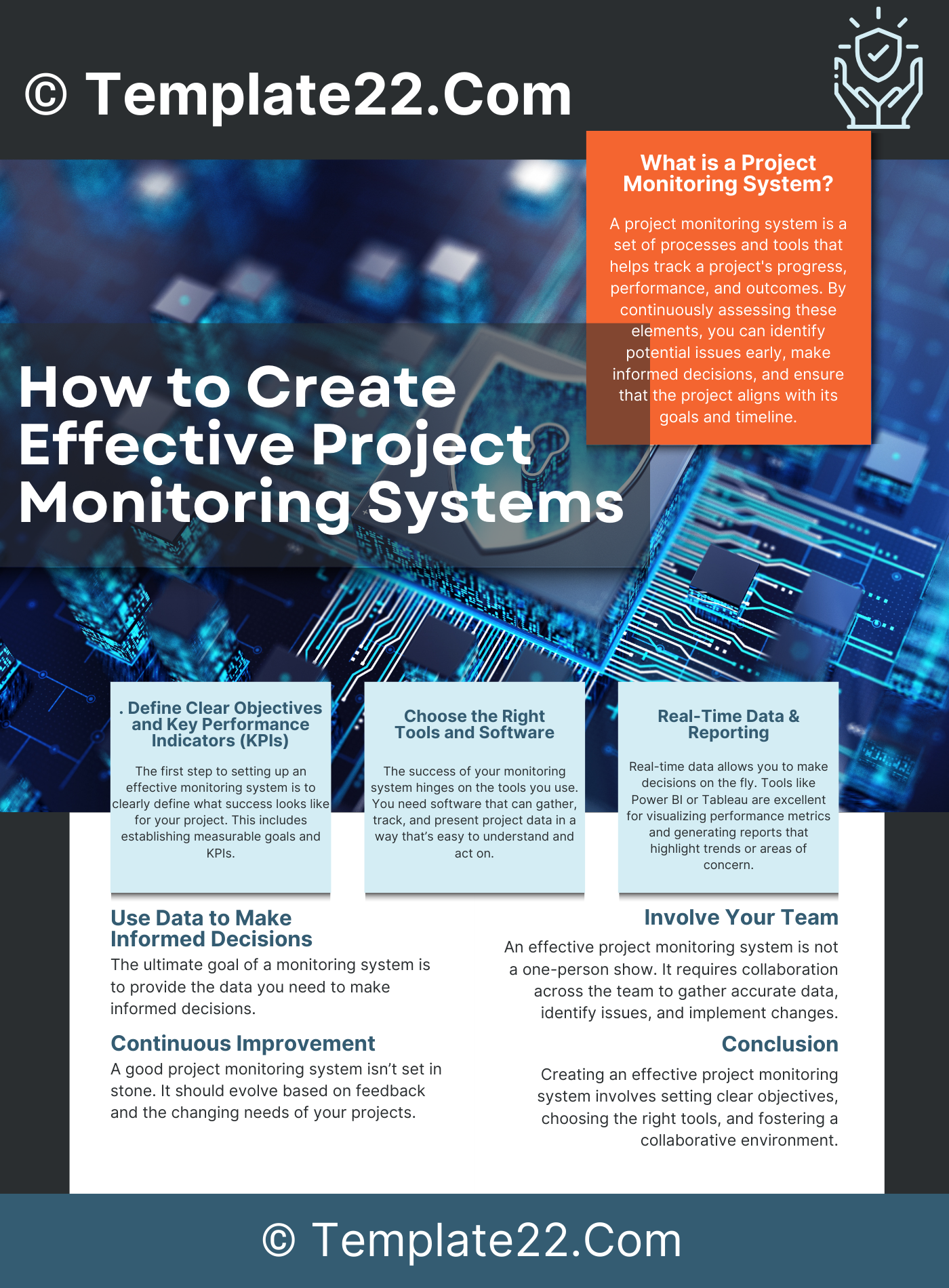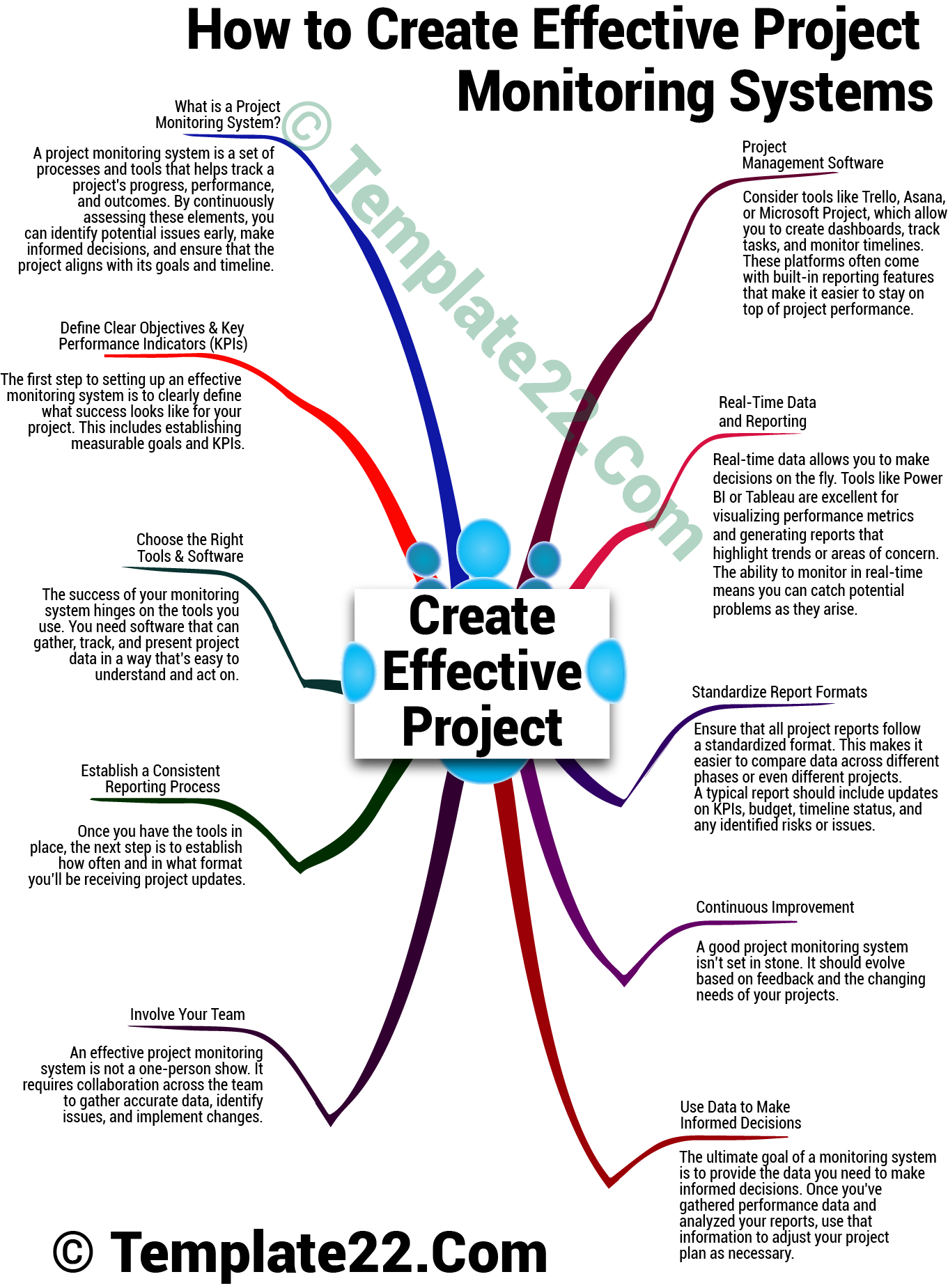 Effective Project Monitoring Systems ensures everything runs smoothly, stays on track, and meets objectives. But how exactly can you set up an effective project monitoring system? Whether managing a small project or overseeing multiple tasks across different departments, having a reliable system in place can make all the difference.
Effective Project Monitoring Systems ensures everything runs smoothly, stays on track, and meets objectives. But how exactly can you set up an effective project monitoring system? Whether managing a small project or overseeing multiple tasks across different departments, having a reliable system in place can make all the difference.
In this blog, we’ll explore what makes a project monitoring system effective and provide actionable steps to help you create one.
What is a Project Monitoring System?
A project monitoring system is a set of processes and tools that helps track a project’s progress, performance, and outcomes. By continuously assessing these elements, you can identify potential issues early, make informed decisions, and ensure that the project aligns with its goals and timeline.
Why Project Monitoring Matters
Effective project monitoring is essential for the following reasons:
- Early detection of risks: You can identify potential problems before they escalate.
- Better resource management: Monitoring helps allocate resources efficiently and adjust as needed.
- Improved accountability: Regular tracking ensures everyone knows their responsibilities and progress.
- Informed decision-making: With real-time data, you can make adjustments swiftly when necessary.
Now that we know why it matters, let’s dive into how to create a system that works.
1. Define Clear Objectives and Key Performance Indicators (KPIs)
The first step to setting up an effective monitoring system is to clearly define what success looks like for your project. This includes establishing measurable goals and KPIs.
Set SMART Goals
Make sure your project goals are SMART—Specific, Measurable, Achievable, Relevant, and Time-bound. For example, instead of saying “improve customer satisfaction,” aim for “increase customer satisfaction by 10% over the next quarter.”
Identify Relevant KPIs
Identify the KPIs that will help you measure the success of your project. These could be:
- Budget performance: Is the project on budget?
- Timeline adherence: Are milestones being met?
- Quality metrics: Is the project delivering quality outcomes?
These KPIs will be the foundation for your Effective Project Monitoring Systems, ensuring you track what matters.
2. Choose the Right Tools and Software
The success of your monitoring system hinges on the tools you use. You need software that can gather, track, and present project data in a way that’s easy to understand and act on.
Project Management Software
Consider tools like Trello, Asana, or Microsoft Project, which allow you to create dashboards, track tasks, and monitor timelines. These platforms often come with built-in reporting features that make it easier to stay on top of project performance.
CLICK HERE TO DOWNLOAD 300+ PROJECT MANAGEMENT TEMPLATES & DOCUMENTS IN EXCEL
Real-Time Data and Reporting
Real-time data allows you to make decisions on the fly. Tools like Power BI or Tableau are excellent for visualizing performance metrics and generating reports that highlight trends or areas of concern. The ability to monitor in real-time means you can catch potential problems as they arise.
3. Establish a Consistent Reporting Process
Once you have the tools in place, the next step is to establish how often and in what format you’ll be receiving project updates.
Frequency of Reports
Depending on the complexity of your project, you may need weekly, bi-weekly, or monthly reports. The key is to find a balance between staying informed and not overwhelming your team with too much data.
Standardize Report Formats
Ensure that all project reports follow a standardized format. This makes it easier to compare data across different phases or even different projects. A typical report should include updates on KPIs, budget, timeline status, and any identified risks or issues.
4. Involve Your Team
An effective project monitoring system is not a one-person show. It requires collaboration across the team to gather accurate data, identify issues, and implement changes.
Foster Open Communication
Make sure that all team members feel comfortable sharing updates, challenges, and insights. This fosters transparency and encourages the team to take ownership of their tasks, leading to more accurate reporting.
Regular Check-ins
Incorporate regular team check-ins, either through meetings or digital updates. This allows everyone to discuss their progress, flag potential delays, and suggest improvements to the system.
5. Use Data to Make Informed Decisions
The ultimate goal of a monitoring system is to provide the data you need to make informed decisions. Once you’ve gathered performance data and analyzed your reports, use that information to adjust your project plan as necessary.
Identify Trends
Look for patterns in your data—are there recurring bottlenecks? Is one team consistently underperforming? By spotting these trends early, you can take action before they turn into significant problems.
Adapt to Changes
Projects are rarely static, and you may need to adjust timelines, reallocate resources, or change objectives as the project progresses. Use your monitoring system as a tool to help guide these decisions, ensuring that they are based on real data rather than guesswork.
6. Continuous Improvement
A good project monitoring system isn’t set in stone. It should evolve based on feedback and the changing needs of your projects.
Gather Feedback
At the end of each project phase, gather feedback from your team about what worked well and what didn’t. Were the reports useful? Was the data accurate and timely? Use this feedback to refine your monitoring system for future projects.
CLICK HERE TO DOWNLOAD 300+ PROJECT MANAGEMENT TEMPLATES & DOCUMENTS IN EXCEL
Stay Flexible
Keep in mind that no two projects are the same. Be prepared to modify your monitoring processes as needed to fit the specific demands of each project.
Conclusion
Creating an Effective Project Monitoring Systems involves setting clear objectives, choosing the right tools, and fostering a collaborative environment. By focusing on real-time data and continuous improvement, you can ensure that your projects stay on track and meet their goals.
Project monitoring isn’t just about keeping an eye on things; it’s about being proactive and using data to drive success.
